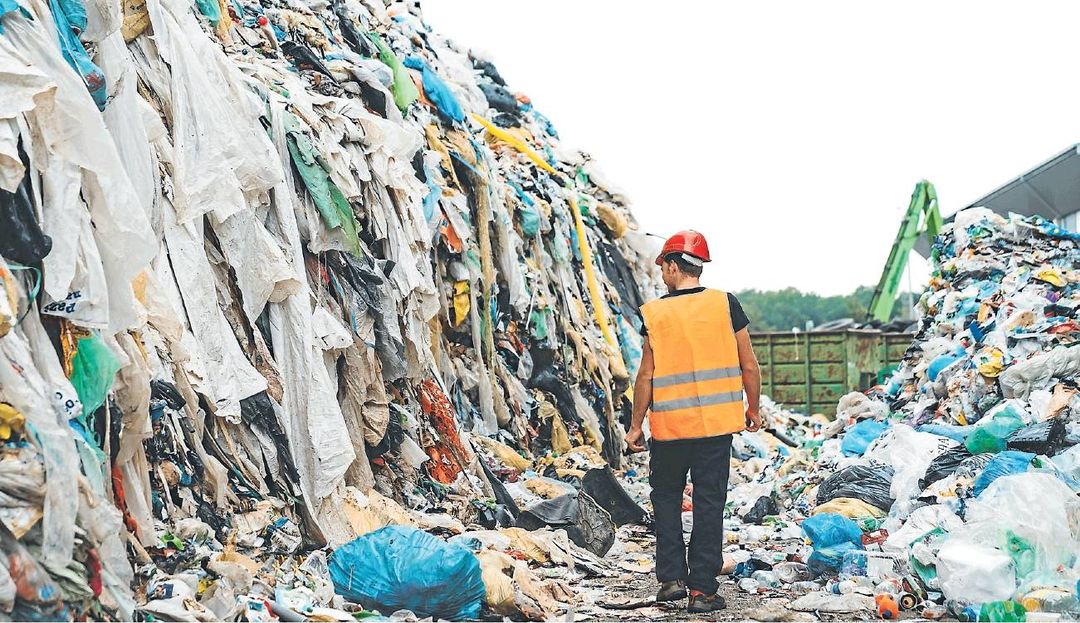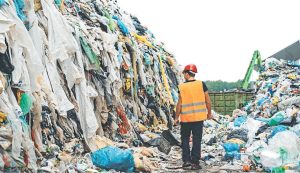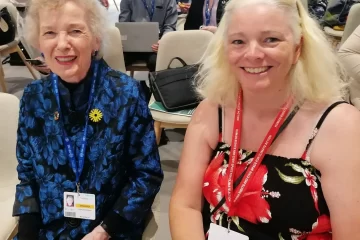Threads of Transparency – uncovering the truth behind discarded clothes

What happens to a lot of your old clothes when you recycle them? Solene Schirrer from Voice Ireland dives deep into the world of textile recycling to uncover the fate of some of our discarded clothes.
Ghana’s sea shore is awash with abandoned garments. Piles of rotting clothes litter the once pristine beaches – the result of the Western world’s growing obsession with cheap and easily disposable fashion items bought from fast fashion giants or online platforms.
But what has caused this environmental nightmare? How did this clothing finally arrive there?
Voice Ireland’s Threads of Transparency campaign aims to tackle this crucial issue. Our primary goal is to raise awareness about practices contributing to environmental degradation and social injustice, all rooted in overproduction and overconsumption.
Brace yourself for the shocking journey into the hidden world of discarded clothes.
Fashion’s non offsetable Footprint:
It’s no secret that the fashion industry and, in particular, fast fashion with its fast-changing pace and rapidly expanding business of mass-produced, cheap, fossil fuel-based clothing has had terrible consequences on both the environment and people who are “paid” to make them.
The fashion industry systematically ranks top 5 in a lot of grim categories:
- 4th largest environmental impact,
- 3rd highest pressure on freshwater resources, and
- 5th highest use of raw materials AND greenhouse gas emissions.
These figures are even more concerning when put in the perspective of current trends. The lifespan of clothing is decreasing – we’re using items of clothes less and less – while the sales have grown much faster than population or GDP.
And this trend is not weakening, with projections predicting a 4.63%[1] compound annual Growth Rate (CAGR) for the clothing industry for the next 5 years, which will clearly aggravate what we see happening at the end of the line: a growing textile waste crisis.
The textile waste crisis.
The statistics are staggering, with Ireland alone discarding 170,000 tons of textiles annually, or 35 kg per capita, surpassing the European average by a significant margin (12kg). But that would be somewhat manageable if we were reusing or, at least recycling these clothes efficiently. Yet, contrary to popular belief, the fate of discarded garments is anything but a seamless cycle of reuse or recycle.
The issue begins at the collection stage, where a staggering 65% of discarded clothing face disposal in general waste bins. This stems from both a lack of public awareness regarding the environmental impact of modern clothing and the absence of a designated waste stream for textiles.
Shockingly, current definitions fail to acknowledge textile waste as a distinct category. However, a positive development is on the horizon as a European Directive mandates the separate collection of used textiles starting this year. As we delve further into the discussion, it is crucial to note the distinction between used textiles and waste.
To envision the fate of separately collected textiles, we need to look at the current process for managing the 35% of collected discarded clothes. These textiles are typically donated to charities or gathered by profit-driven commercial collectors who own most textile banks across the country.
Donated clothes have a higher likelihood of being reused, particularly through the efficient network of Irish charity shops, contributing to a commendable national reuse rate of 20% (from the 60,000 tons collected).
However, the capacity of charity shops is surpassed by the volumes of discards, with the majority likely handled by commercial collectors. Despite occasional partnerships with charities, these profit-focused entities primarily engage in bulk collection and exportation, lacking a focus on reuse or recycling, and often little to no sorting.
The Export Ambiguity – the trade of textile waste.
Here lies the crux of the issue—companies exporting vast quantities of “used” clothing under the single label “reusable”. Despite claims of global repurposing, the process enters a complex international market. The first stop is European resalers, who sort for the highest quality, representing only 10% of the massive textile volumes. Some clothing is also inexplicably destroyed at certain sites, with investigations revealing that, among brand new or reusable items sent through brand take-back schemes, a third were destroyed, incinerated, or downcycled.
This shows a disregard for the waste hierarchy to reuse first before recycling or incinerate.
It’s crucial to add that textile recycling remains highly limited. The global closed-loop capacity for recycling clothing into new clothing is a mere 1%[2], as reported by the European Parliament. Moreover, most recycling is, in fact, downcycling, estimated at around 15%.
This leads us to the next step. If deemed unfit for Western markets, they are sent to second-hand markets in the Global South under the label “reusable.” Despite the long existence of such markets in countries like Kenya and Ghana, the unprecedented volume of waste is a new challenge. According to a report by the Or foundation, only 18% of the bales (which must be paid for before opening) are directly reusable. Another portion is mended and washed, incurring costs for market workers seeking minimal income. Despite efforts in upcycling businesses and creative reuse, over 40% is deemed worthless—stained, torn, or intentionally damaged—ending up discarded on the ground or used as fuel, releasing dangerous toxins. Investigations like “Dead White Man’s Clothes” and “Trashion” reveal a genuine social and environmental crisis due to this waste that is polluting waterways, soils and affecting people’s health.
Threads of Transparency – A Campaign for Change.
With over 25 years of experience in waste issues, VOICE recognizes the critical problem in the lack of regulation in the post-consumer phase of the textile industry. The absence of a designated waste stream for discarded clothes enables unethical practices, such as exporting under the guise of repurposing. This creates a loophole in EU legislation that formally prohibits the export of waste for disposal or hazardous waste even when it’s clear that what we export is often unusable for recipients and contains materials or substances, like elastane, that are known to be impossible to recycle.
As well as raising awareness about this issue, our Campaign Threads of Transparency is advocating for decision-makers and stakeholders to take this seriously. The EU has taken steps by providing guidelines on circular design and promoting separate collection. However, these are merely guidelines, and it is crucial for each member state to prioritize and address this urgent issue promptly and in the correct sequence. From VOICE’s perspective, the most immediate concern is tackling regulatory loopholes. Initial steps involve clarifying definitions and reporting standards before focusing on enhanced separate collection, mandated by the EU by the year’s end. This targeted approach is essential, particularly in retaining and safely disposing of waste within Europe.
While we push for clearer regulations, asking for transparency and traceability in the post-consumer textile sector, we are also taking proactive steps. Our next next project in the making is an online platform, envisioned as a fashion-centric library. On it, you will be able to find all sorts of information related to fashion – its impacts, challenges, but also solutions. We firmly believe that fashion could very well become a leading sector in supporting a societal change driven by new values and principles of well-being, sufficiency and circular economy.
[1] Mordor Intelligence Research & Advisory. (2023, December). Apparel Market Size & Share Analysis – Growth Trends & Forecasts (2024 – 2029). Mordor Intelligence. Retrieved January 23, 2024, from https://www.mordorintelligence.com/industry-reports/apparel-market
[2] The impact of textile production and waste on the environment (Infographics) | News | European Parliament. (s. d.). https://www.europarl.europa.eu/news/en/headlines/society/20201208STO93327/the-impact-of-textile-production-and-waste-on-the-environment-infographics








